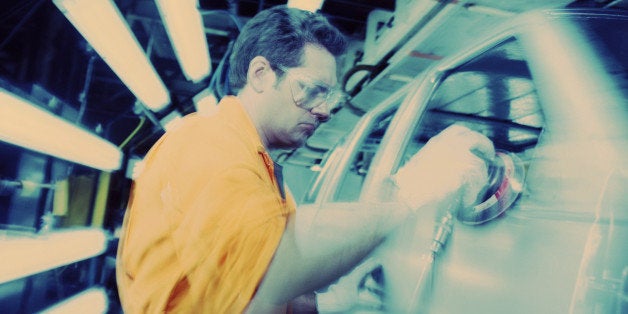
September through December is the time of year when new car models come “out of the oven.” Historically, car manufacturers have relied on the loyalty of Hispanic consumers to sell their products but the growing economic power of Latinos is creating new trends transforming this market, which is now an open field for a fierce competition.
Auto brands and their advertising agencies had to raise their bar to attract a new burgeoning Hispanic market that is showing preferences beyond the traditional American brands and vehicles. Is the well-known Latino brand loyalty a feature of the past?
A changing economic power
Certainly, the economic power of Latinos is changing the race, and manufacturers are ready to fight tooth and nails to get to the finish line in first place. Hispanic buying power has increased from $491B in 2000 to $ 1.2 trillion in 2013. They spend 5.5 percent of their annual income in the purchase of vehicles –compared to the general market that spends 5.6 percent- so they are competitive car buyers.
Also, and despite the economic recession and higher levels of unemployment, Hispanics are making strides in upper mobility. High school graduates’ rates have raised almost 10 percent and college graduates’ rates over 4 percent since 2000. Some of those graduates are opening businesses at a staggering pace: seven out of ten businesses created in the U.S. last year are Hispanic-owned.
With these changes in income, levels of education and access to new opportunities, Latinos are changing their buying behaviors as well.
“Hispanics’ garage used to have a truck and an SUV,” Alvaro Cabal, multicultural communications manager at Ford Motor Company, told VOXXI. “Now, you might also find a sedan, a sign that the community is changing its lifestyle. Our F-150 truck has been and will continue to be a #1 player but Latino consumers are looking for new options.”
Gina Jorge, head of multicultural marketing at American Honda Motor Co., agrees, “Although Honda continues to be the #1 brand in Hispanic loyalty for its reliability and reputation, especially in the used market, we have also seen a change in the aspirations of Hispanic consumers. For instance, we revamped the marketing campaign of the new Honda Accord to reflect the achievements of a community that is working hard at being successful,” she told VOXXI.
Car preferences according to location and age in the Latino market
Hispanics buy one in every four cars sold in the United States, and RL Polk & Co., the marketing firm that specializes in automotive research, estimates that car sales to Latinos have increased 27 percent in 2012 alone.
On one end, trucks and SUVs are still the vehicle of preference for families living in the West Coast, the Southwest and the Midwest, and also those settled in rural areas across the country.
“Chevrolet is trying to engage the Latino consumer authentically. We are integrating with key Latino passion points to become more relevant to buyers. For example with Silverado, the ads show the heart of the truck segment with images of hardworking family men and women at the center,” Tia Hardeman, manager, Chevrolet Diversity Advertising, told VOXXI.
Other vehicles in this category are the Jeep Wrangler –around 4 percent of their sales go to Hispanics- and around 3 percent of the Ram 1500 sales, according to J.D. Power 2012 data.
But Hispanics are one of the most urbanized ethnic groups in the US –almost 90 percent live in metro areas- so they basically look for family size vehicles or small cars.
Hispanic families are larger in number of people and generations sharing a home. Latino households can also be multicultural and multilingual, with a mix of foreign-born and American born relatives. CUVs are now dominating the SUV market. The Honda CRV-4 is a compact that responds to the fuel cost concerns of most Hispanic families. Other family favorites are the Toyota RAV4, Ford Escape, and the Chevy Tahoe.
Research shows that while foreign-born Hispanics over thirty prefer driving Toyota models such as the Corolla, younger Hispanics born in the United States take preference for the Honda models such as the Civic or the Accord.
“Toyota has ranked number one among Hispanics since 2004. Today, Toyota remains the #1 brand in the Hispanic market leading the industry with 16.3 percent market share,” Javier Moreno, corporate communications from Toyota Motor Corporation, told VOXXI. “The Corolla continues to be the #1 national selling vehicle in the Hispanic market with 19.3 percent share of all standard subcompacts sold.”
The preference of imports over domestics is a trend that continues to grow, and so is spending more money on luxury vehicles or “green” cars. High-income Latinos are buying luxury cars at a faster rate than the general market, and those makes include from Land Rover and Mercedes Benz to Ford Shelby Mustangs and Lexus.
As they become more acculturated and immersed in the American way of life, Latinos are also acquiring a taste for cars that not only are reliable and fuel-efficient but also offer the best features and comfort. After all, driving a premium brand car is definitely a way to show “they have made it in America.”
Originally published on VOXXI as Cars, a fierce competition for the Latino market
